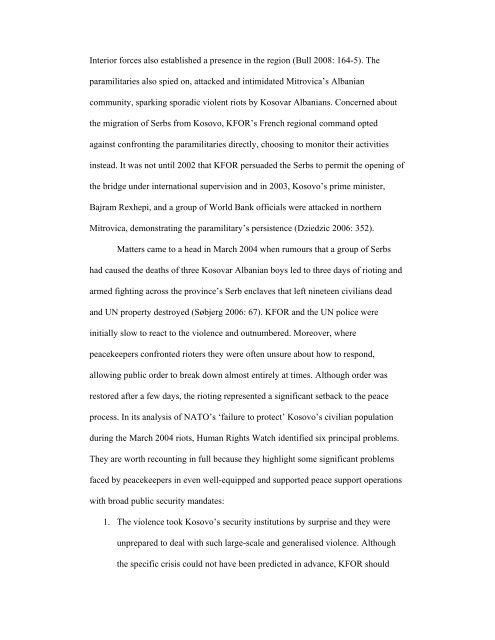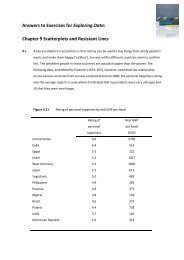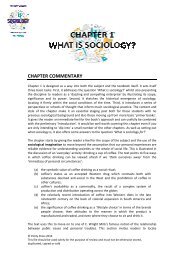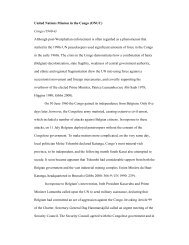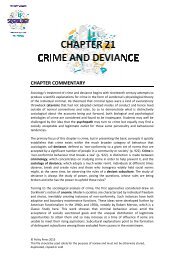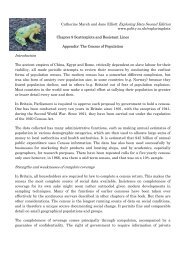KFOR case study - Polity
KFOR case study - Polity
KFOR case study - Polity
Create successful ePaper yourself
Turn your PDF publications into a flip-book with our unique Google optimized e-Paper software.
Interior forces also established a presence in the region (Bull 2008: 164-5). The<br />
paramilitaries also spied on, attacked and intimidated Mitrovica’s Albanian<br />
community, sparking sporadic violent riots by Kosovar Albanians. Concerned about<br />
the migration of Serbs from Kosovo, <strong>KFOR</strong>’s French regional command opted<br />
against confronting the paramilitaries directly, choosing to monitor their activities<br />
instead. It was not until 2002 that <strong>KFOR</strong> persuaded the Serbs to permit the opening of<br />
the bridge under international supervision and in 2003, Kosovo’s prime minister,<br />
Bajram Rexhepi, and a group of World Bank officials were attacked in northern<br />
Mitrovica, demonstrating the paramilitary’s persistence (Dziedzic 2006: 352).<br />
Matters came to a head in March 2004 when rumours that a group of Serbs<br />
had caused the deaths of three Kosovar Albanian boys led to three days of rioting and<br />
armed fighting across the province’s Serb enclaves that left nineteen civilians dead<br />
and UN property destroyed (Søbjerg 2006: 67). <strong>KFOR</strong> and the UN police were<br />
initially slow to react to the violence and outnumbered. Moreover, where<br />
peacekeepers confronted rioters they were often unsure about how to respond,<br />
allowing public order to break down almost entirely at times. Although order was<br />
restored after a few days, the rioting represented a significant setback to the peace<br />
process. In its analysis of NATO’s ‘failure to protect’ Kosovo’s civilian population<br />
during the March 2004 riots, Human Rights Watch identified six principal problems.<br />
They are worth recounting in full because they highlight some significant problems<br />
faced by peacekeepers in even well-equipped and supported peace support operations<br />
with broad public security mandates:<br />
1. The violence took Kosovo’s security institutions by surprise and they were<br />
unprepared to deal with such large-scale and generalised violence. Although<br />
the specific crisis could not have been predicted in advance, <strong>KFOR</strong> should


